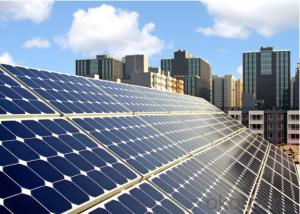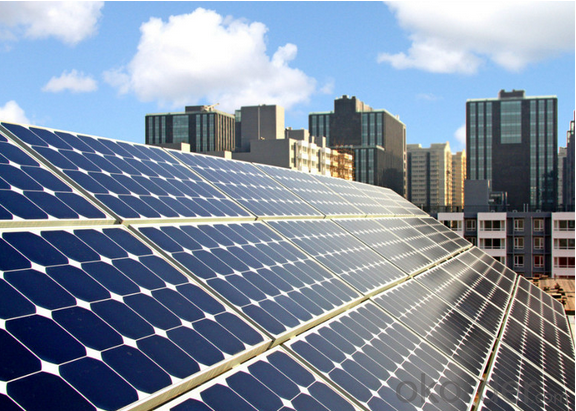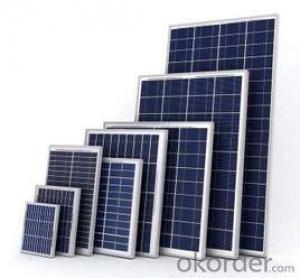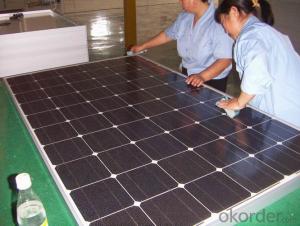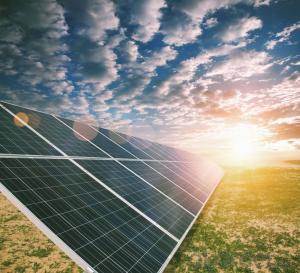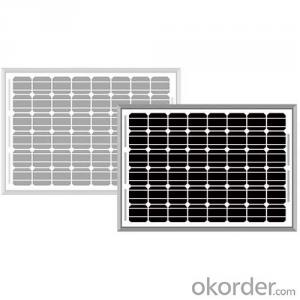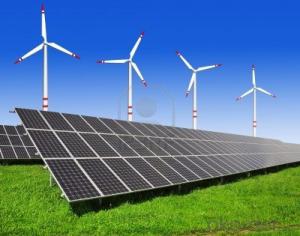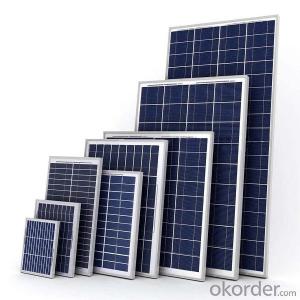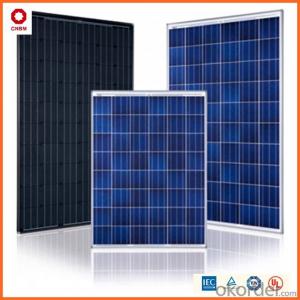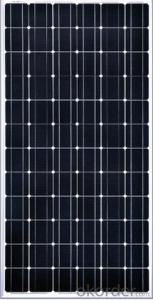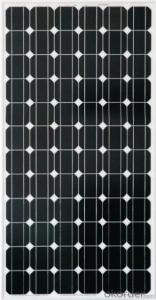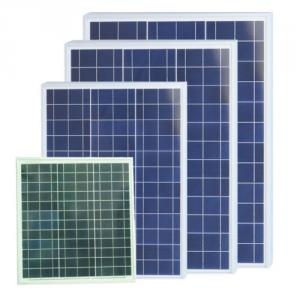Solar Panels Ohio 195w Mono Panel for Solar System with All Certificate
- Loading Port:
- Shanghai
- Payment Terms:
- TT OR LC
- Min Order Qty:
- 312 pc
- Supply Capability:
- 100000 pc/month
OKorder Service Pledge
OKorder Financial Service
You Might Also Like
Specification
195W mono Panel for Solar System with all Certificate
MANAGEMENT SYSTEM
ISO 9001: Quality management system
ISO 14001: Standard for environmental management system
OHSAS 18001: International standard for occupational health and safety assessment system
Safety
1. salt mist corrosion (IEC61701, tested in Intertek)
2. ammonia corrosion (IEC62716, tested in TÜV SÜD)
3. fire risk (Class C, tested in TÜV SÜD and Rheinland)
Reliability
1. PID free products, passing TÜV SÜD system voltage durability test
2. World 1st company to pass “Thresher Test” and “On-site Power Measurement Validation” certificate
3. Bankable products
Performance
1. Advanced glass and solar cell surface texturing allow for excellent performance in low-light environments
2. 100% In-line Electroluminescence (EL) tested during production process ensures modules are high quality
3. Top rank in Photon yield measurement
Electrical Characteristics
Electrical Characteristics
STC: lrradiance 1000 W/m2 module temperature 25OC AM=1.5;
Power measurement tolerance: +/-3%
SRP-195-5MB Unit
Rated Power at STC (Pmp) W
Power Tolerance W
Maximum Power at STC W
Minimum Module Efficiency (ηm) %
Open Circuit Voltage (Voc) V
Short Circuit Current (Isc) A
Maximum Power Voltage (Vmp) V
Maximum Power Current (Imp) A
Maximum System Voltage 1000 (TÜV), 600 (UL) V
Maximum Series Fuse Rating 10 A
Temperature Characteristics
Pmax Temperature Coefficient -0.43 %/°C
Voc Temperature Coefficient -0.32 %/°C
Isc Temperature Coefficient +0.04 %/°C
Operating Temperature -40~+85 °C
Nominal Operating Cell Temperature (NOCT) 45±2 °C
APPLICATIONS
`Solar power stations
`Rural electrification, Small home power systems
`Power supply for traffic, security, gas industry
`12V and 24V battery charging system
`Other industrial and commercial applications
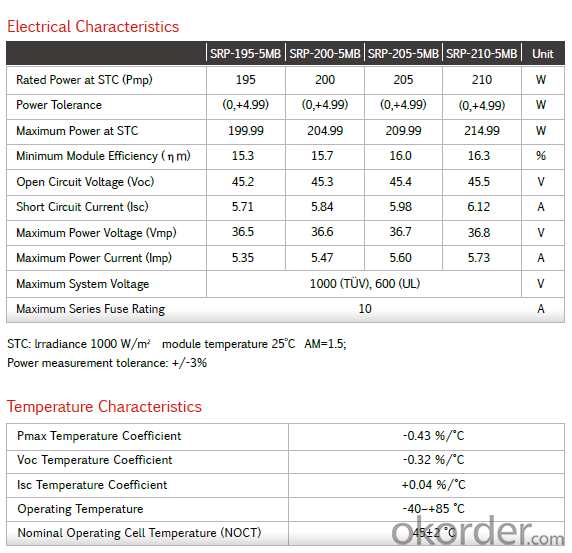
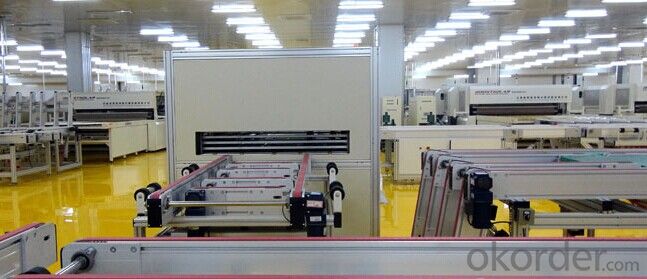
FAQ about Monocrystalline Solar Panel
1. Q: How do I pay for my purchase order?
A: T/T, L/C at sight
2. Q: How can I get sample and how long will it takes?
A: Sample fee will doutbed, but we will return the extra money after you place an order to us, It usually takes 1-3days to produce a sample.
3. Q: What's the MOQ?
A: Depend customer's demand.
4. Q: What's the time delivery?
A: It will take about 5-10 days to finish an order. But the exact time is according to actual situation.
5. Q: Can I have my own customized product?
A: Yes, your customized requirements for color, logo, design, package,shipping marks etc are available.
6. Q: Do you have quality control?
A: Yes, we take great control of the quality.
7. Q:How about the quality?
A: 10-25 Years.
- Q: Rooftop solar panel (not sure if rubber or plastic?) has leak arising from thin vertical crack in panel about long. Any ideas for repair?Thanks.
- bypass the whole panel if you can ( one individual panel of several ) , or bypass that loop in that panel - car part rubber hose clamps
- Q: Can solar panels be used to power a water treatment plant?
- Yes, solar panels can be used to power a water treatment plant. Solar energy can be harnessed through photovoltaic panels and converted into electricity to power the various systems and equipment required for water treatment processes. This renewable energy source can provide a sustainable and environmentally friendly solution for powering water treatment plants.
- Q: a) i'd like to get a solar panel to make this thing i saw in popular science, it was a bag that had a solar panel in the side (you just attach it with grommets into a clear vinyl pocket you make. its for charging elecronics and stuff) and i was wondering what kind i should look at, do they come flexible? can i get them on OKorder? what kind of wattage should i look for (btw it also had a little voltage regulator and stuff to make a little usb in your bag) so any info on that!b) i was thinking about like putting solar panels on my roof, where can i look into that, is that a good choice, has anyone done it, how did it work out? thank you, just curious
- answering b) your home circutry won't be able to handle solar power energy (or your circut breaker,it will start cuttin out every 5 min)you would have to replace your home circutry(that costs a LOT of money, over $8500)
- Q: Can solar panels be used in areas with high levels of humidity?
- Yes, solar panels can be used in areas with high levels of humidity. While high humidity can affect the performance of solar panels to some extent, it is not a significant barrier. Modern solar panels are designed to withstand various weather conditions, including high humidity. In fact, some studies suggest that solar panels can even benefit from the occasional rain or humidity, as it helps in cleaning off dust and dirt, thereby improving their efficiency. Regular maintenance and cleaning can further mitigate any potential impact of humidity on solar panel performance.
- Q: Can solar panels be used for powering a farm or agricultural operation?
- Yes, solar panels can definitely be used to power a farm or agricultural operation. Solar energy can be harnessed and converted into electricity to meet various energy needs in the agricultural sector, such as powering irrigation systems, pumps, lighting, and other machinery. By utilizing solar panels, farmers can reduce their reliance on fossil fuels, lower energy costs, and contribute to a more sustainable and environmentally friendly operation.
- Q: Can solar panels power an entire home?
- Yes, solar panels can indeed power an entire home. With advancements in technology and improved efficiency of solar panels, it is possible to generate enough electricity to meet the energy demands of a typical household. Additionally, by installing a battery storage system, excess energy generated during the day can be stored and used during nighttime or cloudy periods, ensuring uninterrupted power supply.
- Q: How do solar panels affect insurance rates?
- Solar panels can generally have a positive impact on insurance rates. While the installation of solar panels may slightly increase the dwelling coverage, the potential savings on electricity bills and the added value to the property can often outweigh any additional costs. Additionally, some insurance companies offer specialized policies and discounts for homes with solar panels, making it a favorable choice for homeowners.
- Q: I am looking at a need of roughly 30w/hour need per 24 hour period. I have spent several hours now looking for information online and have found plenty of info regarding the panels themselves, but information regarding the batteries backups have been slim. I understand that there is a 5-7 hour peak time to collect the energy. I am looking for information regarding the batteries themselves. How do the batteries work, what size batteries should I look for, and what is the life expectency for the batteries? Any website links would also be appreciated!
- Solar panels have their own characteristics and generate current depending on the intensity of sunlight falling on them and not on the temperature. Direction of the panel also makes lots of difference. Nowadays very thin panels are available at very high cost. The more area a panel occupies it generates more current. The current generated by a panel cannot be readily used since the current and voltage varies with the load connected to it. So normally a regulator is used to have constant voltage and constant current to come from the panel. This charges the battery. You have to calculate the total/normal current from the charger and then find the AH of the battery. When you have calculated the AH of the panel/charger then you can divide the AH of the battery by the AH of the charger/panel and find out the time taken to fully charge the battery. You also have to remember that there is a de-rating factor to be taken into consideration in the battery.
- Q: How do solar panels affect the property's energy management strategy?
- Solar panels can significantly impact a property's energy management strategy by providing a renewable and sustainable source of electricity. By harnessing solar energy, the property can reduce its dependence on traditional power sources, lower energy costs, and decrease its carbon footprint. Solar panels can also help to stabilize energy prices, as they generate electricity during peak demand periods, reducing the need to purchase electricity from the grid. Additionally, solar panels can provide a reliable source of backup power during grid outages, enhancing the property's energy resilience. Overall, solar panels offer numerous advantages to a property's energy management strategy, promoting sustainability, cost savings, and energy independence.
- Q: How does the size of a solar panel affect its performance?
- The size of a solar panel directly affects its performance as it determines the amount of sunlight it can capture and convert into electricity. Generally, larger solar panels have more surface area to absorb sunlight, resulting in higher power output. A larger panel can generate more electricity, making it more efficient and productive than a smaller one. Additionally, larger panels often have more individual solar cells, which further enhances their performance and efficiency.
Send your message to us
Solar Panels Ohio 195w Mono Panel for Solar System with All Certificate
- Loading Port:
- Shanghai
- Payment Terms:
- TT OR LC
- Min Order Qty:
- 312 pc
- Supply Capability:
- 100000 pc/month
OKorder Service Pledge
OKorder Financial Service
Similar products
Hot products
Hot Searches
Related keywords
